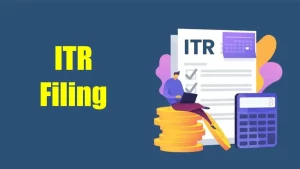![]()
Editor Tax Return E-Filing
The process of Editor Tax Return E-Filing (ITR) for editors involves several steps to ensure accurate reporting of income and deductions.
Here’s a breakdown of the procedure:
1. Gather Necessary Documents:
Start by collecting all relevant documents, including Form 16 (if applicable), bank statements, details of freelance or employment income, and any deductions you plan to claim.
2. Choose the Correct ITR Form:
Editors typically fall under the category of professionals, so they may need to file ITR-3 or ITR-4, depending on their business structure and income sources.
3. Income Declaration:
Declare your editorial income, whether it’s from a full-time job, freelancing, or any other source. Make sure to provide accurate figures to avoid discrepancies.
4. Claim Deductions:
Editors can claim deductions under Section 80C (for investments), Section 80D (for health insurance premiums), and other applicable sections. Ensure that you have the necessary documentation to support these claims.
5. Report Other Sources of Income:
If you have income from other sources like rental property or investments, report them in the appropriate sections of the ITR form.
6. Pay Advance Tax:
If you’re expecting a tax liability of more than Rs. 10,000, pay advance tax to avoid penalties. This is crucial for editors who have freelance income.
7. Fill Out the Form:
Input your income details, deductions, and taxes paid in the ITR form. Double-check all entries to prevent errors.
8. Calculate Tax Liability:
The e-filing platform will automatically calculate your tax liability based on the information provided.
9. Verify and Submit:
Review the filled form thoroughly and ensure accuracy. Then, submit it online through the income tax e-filing portal.
10 Generate and Verify ITR-V:
After submitting, generate the ITR-V form and download it. Sign it and send the physical copy to the Centralized Processing Center (CPC) within 120 days of e-filing.
11. E-Verification (Optional):
Alternatively, you can e-verify your ITR using Aadhaar OTP, net banking, bank account, or other available methods. This eliminates the need to send the physical ITR-V.
12. Acknowledgment:
Once the ITR is successfully verified, you’ll receive an acknowledgment email from the Income Tax Department.
13. Track Status:
Keep track of your ITR status through the e-filing portal to ensure timely processing.
14. Keep Records:
Maintain a copy of your filed ITR, supporting documents, and any communication with the tax department for future reference.
By following these steps, editors can accurately file their ITR online and fulfill their tax obligations.
To visit: https://www.mca.gov.in/

For further details access our website: https://vibrantfinserv.com